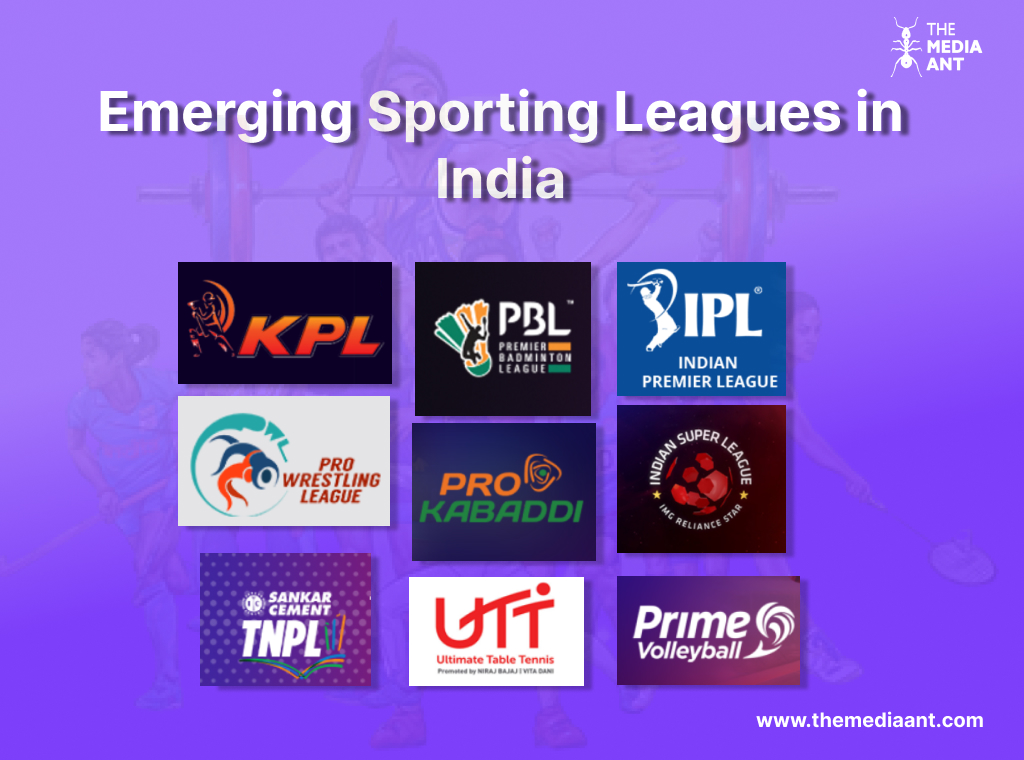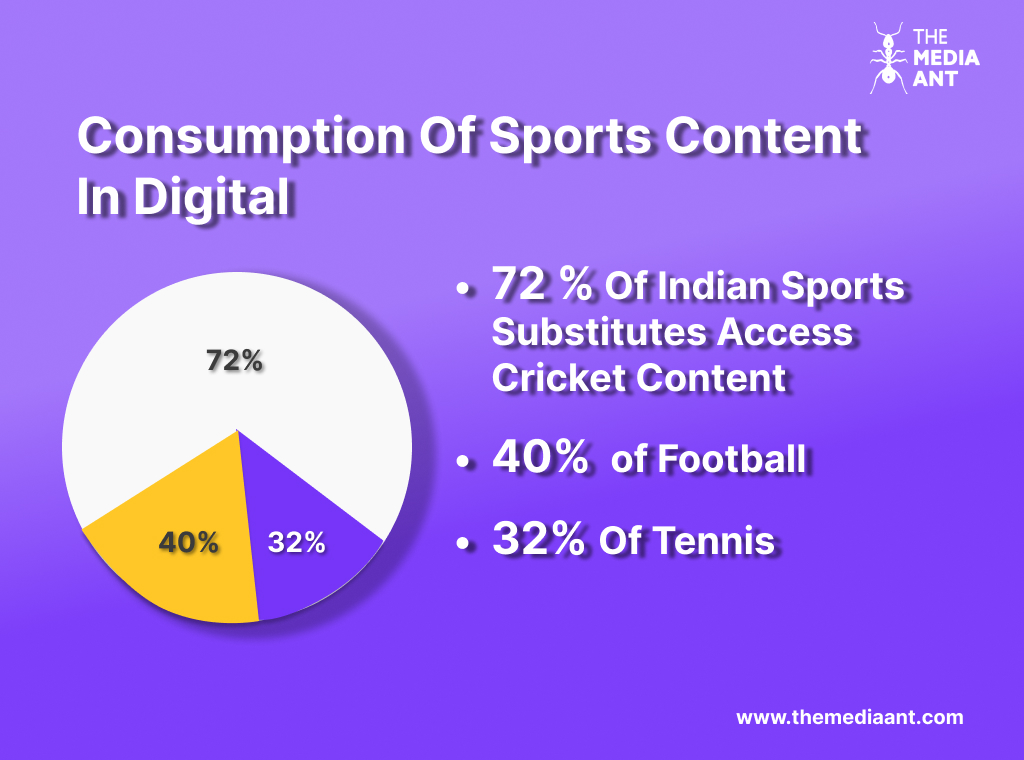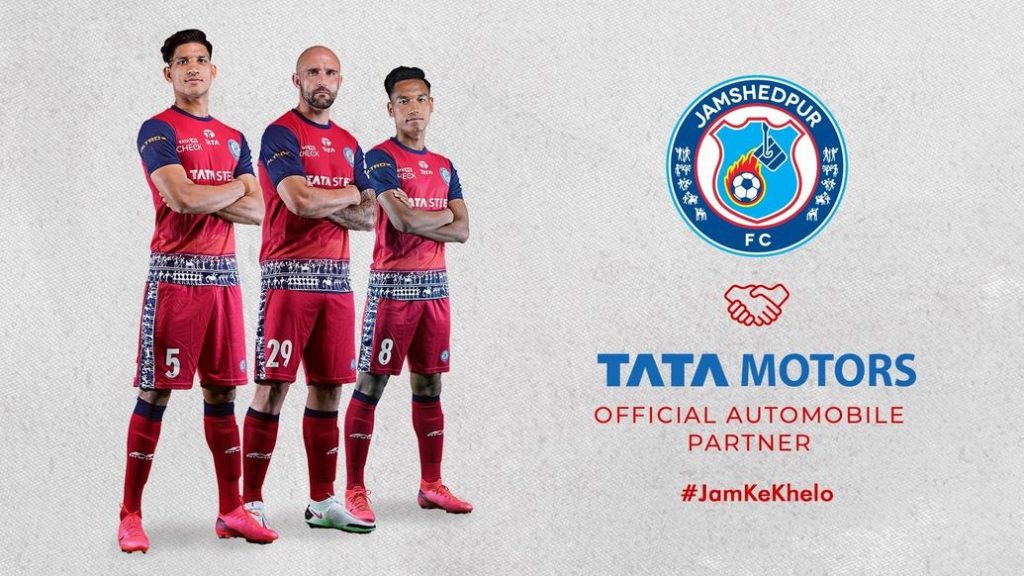Introduction
In late August 2023, there was a notable increase in India’s national pride, driven by a series of remarkable occurrences. These included the successful moon landing of Chandrayan, the rapid ascent of the young chess sensation R Praggnanandhaa, and the reaffirmation of Javelin thrower Neeraj Chopra’s global supremacy in track and field with a gold medal at the World Athletics Championships (WAC).
Chopra’s gold medal further fueled the impressive performance of Indian athletes on the global stage. In June 2023, India’s men’s badminton team, led by Srikanth Kidambi, Lakshya Sen, and Prannoy H. S., achieved a historic victory by clinching the Thomas Cup (World Men’s Team Championships) for the first time. In March, light flyweight boxer Nikhat Zareen earned her second world championship gold medal at the IBA Women’s World Boxing Championships.
As a result of these achievements, non-cricket athletes have experienced a significant rise in brand interest. According to GroupM’s ESP Sporting Nation Report 2023, released in April, the Indian sports industry witnessed substantial growth in 2022, with expenditures surpassing Rs14,000 crore.
Interest in athletes from sports other than cricket has been steadily on the rise for a significant period. The surge in Badminton’s popularity began with Saina Nehwal’s medal at the London Olympics 2012, and since then, we have witnessed a substantial increase in the performance and recognition of non-cricket athletes across various sports. While they may not have reached the same level of prominence as cricketers, the gap between the two is unquestionably narrowing.
What is leading to the growth of emerging sports?
Rise in the no. of leagues
The sports landscape in India has been relatively lackluster for a while, with cricket dominating the scene, and only recently have we witnessed a surge in football leagues. Sports like Kabaddi, Hockey, and the Olympics seem to receive less attention, but this is changing rapidly. India is no longer solely a cricket-centric nation, and the sports industry is expanding significantly, surpassing a billion US dollars and growing at a remarkable 35-40% annually.
The involvement of private organizations in the sports industry, particularly through sports sponsorship initiatives, has caused a notable transformation across the sector. There’s much to discuss regarding the business side of sports, with the IPL, for instance, generating a staggering 480 million euros in the past year from Twenty20 Cricket, and the ISL estimated to exceed INR 400 crores solely from advertisements and sponsorships.
Indeed, it’s not solely about finances, but the increased revenue streams have spurred the establishment of additional boxing arenas and rings. Sports marketing has reached unprecedented levels in India, resulting in improved visibility, upgraded facilities, and enhanced performance from athletes across various sports.
The rise of emerging sports
The Sporting Nation 2023 report underscores the remarkable growth of sports sponsorship in India. Expenditures on various aspects like on-ground events, teams, and franchises surged by INR 3,021 crore, marking an astonishing 105% increase from 2021, resulting in a total sponsorship spend of INR 5,907 crore.
This substantial rise in spending can be attributed to several factors, including the expansion of the IPL with more matches and the introduction of two new teams, international events like the ICC T20 World Cup, Asia Cup, FIFA World Cup, as well as the resurgence of emerging sports events and tournaments like PKL, prestigious marathons, Maharashtra Open, and the Commonwealth Games in 2022.

Significant Changes in the Sports World
- 15+ leagues launched in the last decade.
- Pro Kabaddi League is set to enter its 10th season and remains the 2nd most watched domestic franchise after IPL.
- In fact, in 2022 PKL garnered 222 Mn compared to IPL that witnessed 361 Mn viewers.
- Kho Kho however, is popular amongst Tier 2, 3 & 4 masses. Maharashtra being the biggest market and having a huge following in South India.
- Hockey India League to be revised in 2024 in a jazzier 2.0 avatar, along with Pro Wrestling League and Boxing League.
Notably, there was a significant boost in the recognition and success of Indian women athletes, with women cricketers gaining international acclaim and making a name for themselves on the global stage.
Sponsorships and brand investments are no longer confined to cricket, as an increasing number of marketers are adopting a more inclusive approach to sports marketing. Sports such as badminton, kabaddi, Kho Kho, handball, and even yoga are now attracting the interest of marketers.
Paradigm shift from cricket
Marketers are showing growing interest in sports like badminton, wrestling, kabaddi, boxing, and other non-cricket disciplines as athletes excel in major leagues. Brands across various sectors, including fashion, fintech, edtech, food and beverage, fast-moving consumer goods (FMCG), electronics, and more, are increasing their investments in media advertising, on-ground sponsorships, team sponsorships, and endorsements in a diverse range of sports.
While cricket continues to lead the way, it’s no longer the sole focus for both contemporary and established brands in their marketing strategies.
While investing in cricket ensures immediate visibility and rapid recognition for any brand, aligning with indigenous and emerging sports offers brands a more cost-effective avenue to connect with a substantial number of young fans who are passionate about a particular sports discipline.
The sector experienced a remarkable 62 percent growth compared to 2020, with India’s performance at the Tokyo Olympics serving as a significant source of inspiration for budding sports talents in the country. Additionally, there was substantial growth in Sport AdEx, reaching Rs 6,018 crore in 2021. The expenditure on endorsements of sports celebrities increased by 11 percent year-on-year in 2021.
Among the 444 brand endorsement deals in 2021, cricketers were involved in 318 endorsement deals, representing 87 percent of the total brand endorsement value. Nevertheless, in the Olympic Year of 2021, endorsements for emerging sports athletes surged by 79 percent, making up 13 percent of the overall brand endorsement value.
Brands leveraging the growth trajectory of non-cricket sports
The support of brands is also contributing to the revival of traditional sports like Kho-Kho. For example, the Ultimate Kho Kho league has already secured Sony Pictures Networks India (SPNI) as its official broadcast partner. This sport has a strong cultural connection as a community game with a dedicated following, making it a promising prospect for marketing.
Leagues are becoming highly engaging on-air properties, prompting brands to expand their investments beyond cricket-related content.
According to TAM AdEx data, live sports programming increased to 21 percent of total programming hours in 2021, up from a low of 13 percent during the pandemic. This, in turn, elevated the share of valuable live sports ad volumes to 37 percent, up from 24 percent in 2020.
India’s improved performances at events like the Olympics, Commonwealth Games, and Asian Games, as well as the Khelo India initiative, have provided the country with an unprecedented platform in the realm of sports. This presents an ideal moment for sports intellectual property (IP) rights holders to strike the right chord and resonate with various stakeholders such as teams, sponsors, and broadcasters. Advertisers, on the other hand, are actively seeking new opportunities to engage with consumers.
India is swiftly transitioning from being a single-sport-focused nation to a multi-sport nation. The saturation of advertising around cricket has prompted marketers to invest in newer, rapidly developing sports leagues to connect with a diverse audience that includes young, dynamic, and aspirational fans from metro areas as well as Tier I, Tier II, and Tier III towns.
Advertisers are adopting a “catch them young and watch them grow” approach, especially with indigenous properties. Current trends among brands involve selecting events that enable them to establish a lasting connection that goes beyond the immediate moment and, more importantly, aligns with their marketing and messaging objectives.
Numerous modern brands like Paytm, BharatPe, PhonePe, Upstox, Byju’s, Unacademy, Cred, and others are leveraging this audience base to tap into the emerging ‘Bharat’ market.
India’s victory in non-cricket sports
Brands must support competitiveness rather than just wins
Brand interest in athletes tends to peak when Indian athletes achieve significant recognition on the global stage. A prime example is Neeraj Chopra, who experienced a substantial increase in brand endorsement deals after winning the Olympic gold in 2020. Following his Olympic success, he attracted endorsements from brands like CRED, TATA AIA Life Insurance, MuscleBlaze, Gillette, Country Delhi, and Mahindra, among others.
However, in the subsequent years, there was a slight decline in Chopra’s presence in brand advertisements. Post 2021, he has only endorsed brands such as Limca Sportz, Switzerland Tourism, and YouTube. This pattern applies to athletes in various sports disciplines, which may be linked to the limited media coverage they receive.
Athletes who win medals in notable sporting events also achieve success in other competitions. Unfortunately, these less-publicized events do not receive the same level of media attention, leading to reduced public awareness of the athletes’ accomplishments. As a result, brand interest in athletes corresponds with the extent to which the public remembers their achievements.
However, in recent times this phenomena is taking a slow turn, where established brands like TATA, Hero Moto Corp and JSW are supporting emerging sports athletes through their journey to success.
Increase in viewership as a result of wins
Subscriptions centered around sports have significantly boosted the consumption of sports content among users. Specifically, more than three-quarters of urban Indians (77%) state that their sports content subscriptions have motivated them to consume a greater amount of sports-related content, while roughly a fifth (18%) have maintained their existing levels of sports viewership.

Regarding digital sports streaming and content, cricket stands out as the most favored sport, with a substantial majority of Indian sports subscribers accessing cricket content (72%). Following cricket, the next most popular sports among urban Indian sports subscribers are soccer (40%) and tennis (32%).
Nationalism & Sports in India
Nationalism in sports can work wonders. Long gone are the days when the feeling of patriotism was limited to our men in blue. The transition from ‘cricket isn’t just a game, it’s a religion’ to the recognition of our ‘women in blue’ and our javelin guy Neeraj Chopra emerging as the ‘golden arm’ of India has been revolutionary.
It was the Tokyo 2020 Olympics that ignited a surge of national pride in India, with heightened enthusiasm and support for Indian athletes across various disciplines, including weightlifting, wrestling, badminton, and boxing. But this wave of fervor was a recurring quadrennial event, intensifying during the Olympic Games and gradually waning once the games conclude.
The phenomenon of cheering, screaming, pump fisting, hi-fiving during the Olympic games dies as soon as the game ends and audiences resume watching cricket. But the past few years has been a game changer for our cricket-crazy nation and here’s how;
Emergence of ‘Khelo India’
The “Khelo India” initiative has emerged as a pivotal program in India’s sporting landscape. Launched by the Government of India, it aims to promote sports at the grassroots level, identify and nurture young talent, and provide them with the necessary support and resources to excel in various disciplines. The initiative also seeks to increase physical fitness and sports participation among youth, emphasizing the importance of a healthy lifestyle.
Through “Khelo India,” the government organizes annual sports competitions at the school and university levels, offering significant financial incentives and scholarships to promising athletes. This initiative has led to the discovery of many young talents and has played a crucial role in nurturing the next generation of Indian athletes, making them competitive on the national and international stages. “Khelo India” is an essential step in India’s efforts to enhance its sports culture and achieve success in various sporting events.
India’s Wins
Indian sports enthusiasts will look back on the year 2022 with great significance. It was a year filled with numerous groundbreaking accomplishments and historic feats by Indian athletes on the global platform, building on the impressive performance of 2021, where India’s stars showcased their brilliance at the Tokyo Olympics.
Here’s a relook at the peaks:
1. Neeraj Chopra stamps his mark on the World Championships and Diamond League.
2. Indian athletes rose to the occasion and came away with 61 medals, including 22 golds, 16 silvers, and 23 bronze in the CWG 2022.
3. Maiden Thomas Cup badminton win.
4. Nikhat Zareen becomes boxing world champion in CWG 2022.
5. Indian women’s hockey team wins inaugural Women’s FIH Nations Cup.
Growth of Homegrown sports
Pro Kabaddi league has transformed the homegrown sport by creating a robust and constantly growing economy around the sport while driving aspirational value for the youth in the country as the league completes 9 years firmly establishing itself as India’s own sport.
To elaborate further on that, the most expensive player sold in the first season was paid 12 Lac, whereas, in the ongoing ninth season of the league, the most expensive player was sold for a whopping 2.26 crore. In the fifth season of the league, VIVO came on board as the first-ever title sponsor for the league, signing a five-year deal with the league.
The 2022-23 season of the Hero Indian Super League (ISL) has emerged as the second-most searched sports league in India, according to the top search engine Google.
The league, which has already taken the scene by storm with some thrilling and edge-of-the-seat action on the pitch, featured in the top-10 searches on google in India amongst all categories, sixth in the overall sports category and second amongst all Indian sports leagues in the country after the Indian Premier League.
Other sporting events like, badminton, tennis, chess, boxing are also gaining massive popularity amongst the young crowd.
Successful Brand Campaigns
TATA Motor’s Association with Jamshedpur FC
During the 2021 ISL tournament, Jamshedpur FC secured Tata 1mg as their official health partner. As part of this agreement, the brand’s logo was featured on the players’ shorts, and it was also promoted within the stadium during the club’s home games.
Jamshedpur FC also extended their partnerships with Tata Motors and NIVIA. Tata Motors continued as the club’s automobile partner and used the opportunity to showcase their first sub-compact SUV, PUNCH. Additionally, NIVIA and Jamshedpur FC inked a two-year extension deal, with NIVIA becoming the official kit partner for the club.

Tata Motors boasts a strong history of affiliations with various sports ventures. This multinational conglomerate has actively participated in some of India’s most significant and prominent sporting events, including the recently concluded Indian Premier League. Tata Motors’ close partnership with Jamshedpur FC dates back to the club’s inaugural Hero ISL season in 2017-18, marking the third consecutive year of this remarkable collaboration aimed at promoting Indian Football.
The Jamshedpur FC match attire prominently featured the Tata Tiago logo on the sleeves and shorts. Furthermore, the brand-new Tata Tiago model was showcased at the JRD Tata Sports Complex during Jamshedpur FC’s home matches. As part of this association, the club also had plans to engage with their fan base through a series of captivating campaigns and contests across Jamshedpur FC’s digital media platforms.
JSW Sports breaking all grounds across sports events
JSW Sports, which entered the sports sponsorship consulting sector in 2022, has achieved considerable success by facilitating sponsorship agreements worth Rs 250 crore in the 2022-23 period, as stated by its Chief Operating Officer, Divyanshu Singh. The sports management company has played a key role in over 150 deals in the past year, encompassing both assets owned by the firm and those from third parties.
JSW Sports’ involvement in sports sponsorship consulting is a natural extension of its existing role in athlete management, according to Singh. The overarching vision and mission of JSW Sports encompass the expansion of sports sponsorship while also introducing innovative approaches to the assessment and presentation of sports to brands.
JSW Sports is involved in a range of sports, with ownership of teams in football, cricket, and Kabaddi, in addition to its athlete management activities across various disciplines such as cricket, boxing, wrestling, and track & field.
The key sponsorship deals facilitated by JSW Sports include those with HSBC, Athletics Federation of India, Qatar AirwaysRCB, Sportzbuzz with multiple WPL teams and HRX’s licensing and merchandising deals with four IPL teams.
Conclusion
The landscape of sports and branding in India is undergoing a significant transformation. The country, once primarily cricket-centric, is now witnessing the rise of non-cricket sports on both the global stage and in the marketing world. The achievements of athletes like Neeraj Chopra, R Praggnanandhaa, and Nikhat Zareen have propelled the recognition of emerging sports, while private organizations’ involvement and sponsorships have fueled the growth of various leagues.
In this evolving landscape, brands have the opportunity to forge lasting connections, resonate with audiences, and invest in India’s rich sporting heritage. The era of looking beyond cricket has arrived, and those who embrace it stand to benefit from a dynamic and passionate sports-loving nation.





